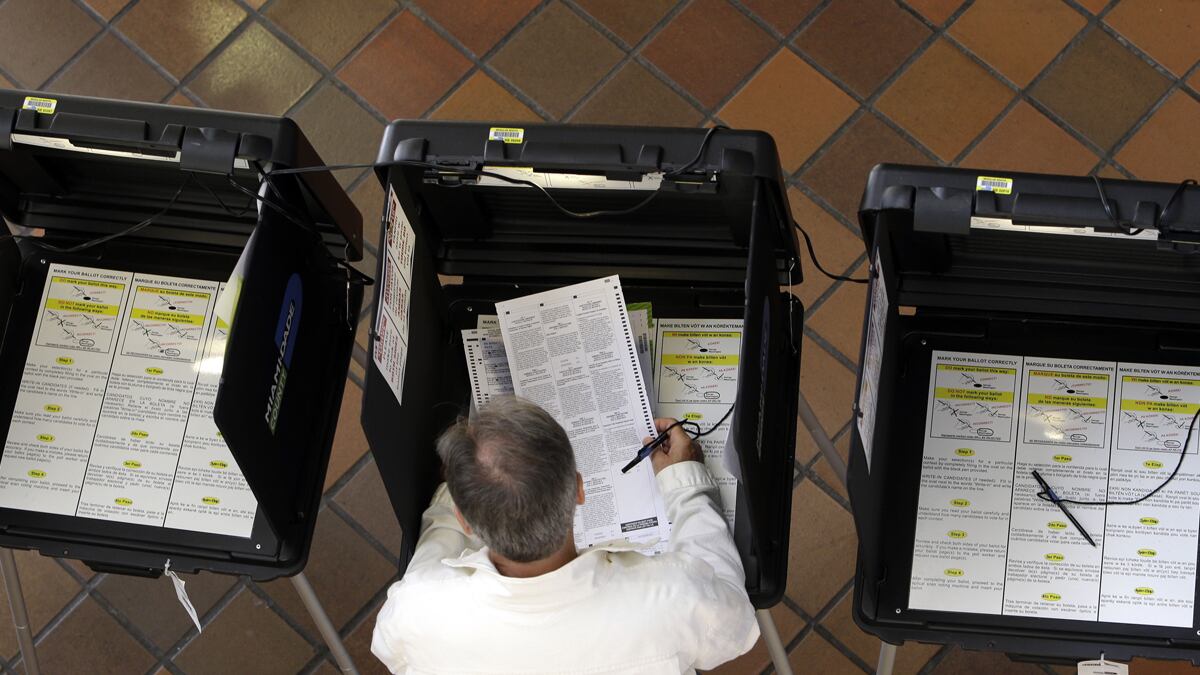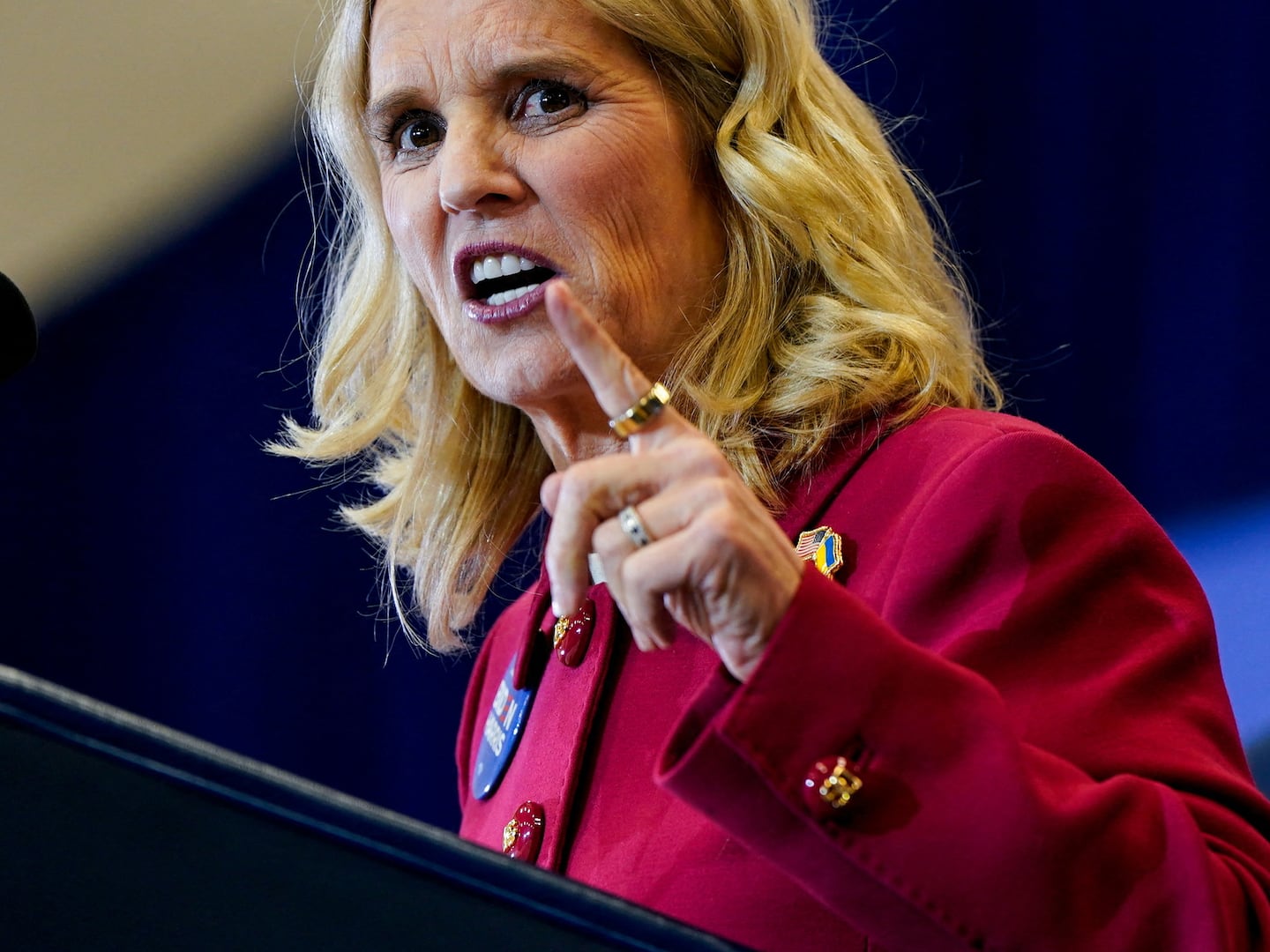Ballot initiatives are direct democracy—the cutting edge of politics—but they don’t get the respect they deserve despite the huge consequences that can come from giving citizens the rebellious ability to do an end run around their slow-moving state legislatures.

With sex and drugs questions along with taxes, education, and election reform up in states across the nation, this year’s crop of ballot initiatives deserve your attention. Beyond the votes for president and Senate, they could help shape future policy debates across the nation.
So here my take on the most interesting and consequential items on the ballot in 2012. For a more comprehensive look, check out Ballotpedia.com
Same-Sex Marriage
Support for marriage equality is gaining traction across the nation, but it has famously been defeated in more than 30 ballot initiatives, raising questions about the ethics of putting civil rights to a popular vote. But polls show that streak might stop this cycle in Maine, where voters appear ready to recognize same-sex marriage despite defeating a similar proposal in 2009. Maryland, Washington, and Minnesota also have marriage-equality measures on the ballot. With a thin majority of Americans now supporting marriage equality—including President Obama—these ballot initiatives will be tests of whether we are at the tipping point.
Marijuana Legalization
Colorado is not just a pivotal swing state in the presidential campaign, it is ground zero for the most ambitious marijuana-legalization measure in the nation. Amendment 64 promises to regulate marijuana like liquor, producing new revenue for the cash-strapped state and dedicating the first $40 million to new school construction. The pitch is more sober-minded than a California pot-legalization pitch that was defeated in the Tea Party year of 2010. Polls have shown the measure could pass, thanks to majority support from every age group except those older than age 65, evidence of a striking generational divide on pot legalization. This initiative is an additional X factor in the state’s close presidential race. Will it boost youth turnout to President Obama’s advantage—or will that support go instead to Libertarian candidate Gary Johnson, and if so, whom will that hurt, Obama or Mitt Romney? Washington and Oregon are also considering similar measures, but Colorado seems the most likely to pass.
Election Reform
The two parties hate to give up their stranglehold on power—and that’s why it usually takes citizen ballot initiatives to achieve election reform. This year, Arizona is considering the top-two open primary system similar to the one passed by California in 2010. This essentially opens the process and levels the playing field for independent voters, who are the fastest-growing political demographic in the state. Former Phoenix mayor Paul Johnson backs the measure and explained his support by saying, “The greatest incentive politicians have is to be elected. Too many politicians seeking to win their partisan primary simply do so by demonizing the other party. But under Prop. 121, politicians would have to face all voters. This creates an incentive to reach out to all voters, and work together regardless of party once they are elected.” Ohio voters are also considering a ballot amendment that would create an independent citizens redistricting commission, aiming to end the rigged system of redistricting currently controlled by legislators and influenced in the last cycle by House Speaker John Boehner. As Ohio goes, so goes the nation.
Budget Reform
California Gov. Jerry Brown is furiously pushing for Proposition 30, which would raise taxes to help stave off $6 billion in projected cuts to education and other areas through a sales-tax increase and income-tax increase on families making more than $250,000. A competing initiative pushed by the daughter of Berkshire Hathaway’s Charlie Munger would dedicate the new revenue to education, while Brown’s would funnel it through the general fund. This is high stakes, because our nation’s largest state is perennially on the brink of bankruptcy. Past propositions, like the infamous Prop 13 (passed in the 1970s, when Brown was also governor), have tied Sacramento’s finances up in knots. Twelve other states are considering tax and budget reforms, but California’s is the most high profile, with the Golden State teetering on the edge of becoming America’s Greece.
Union Reforms
In the wake of Scott Walker’s moves in Wisconsin, the issue of collective bargaining and the political use of union dues is front and center. In Michigan, unions are pushing Proposal 2, which would enshrine collective-bargaining rights in the state constitution. In California, a measure that would restrict corporations from donating to candidates would also prevent unions from taking automatic payroll deductions and using them for political purposes.
Education Reform
Education reform is at the cutting edge of public-policy debates, one area where there is increasing bipartisan common ground, despite still-intense opposition from entrenched interests. In Washington state, a Bill Gates–backed initiative would remove the state’s archaic ban on charter schools. A parent-trigger provision could give the ability to convert failing public schools into charters with majority local support. In Georgia, a state constitutional amendment would create a special commission to authorize the creation of new charter schools. Maryland voters will consider an in-state DREAM Act allowing undocumented immigrants to get in-state tuition at state universities. And in Florida, a measure that would remove a ban on religious institutions from receiving taxpayer money is seen as a bid to allow student vouchers to be directed to parochial schools, opening up educational competition and possible further reforms in the state.
Physician-Assisted Suicide
Massachusetts voters will decide whether doctors can prescribe lethal doses of medication for patients who have less than six months to live. If the Bay State OKs the morally complex measure, it would join Oregon and Washington in allowing Dr. Deaths to practice. With an aging baby-boom population, the fact that this law could make its way east from the Pacific Northwest could have significant repercussions. In a semirelated measure, Californians will decide whether to ban the death penalty.






